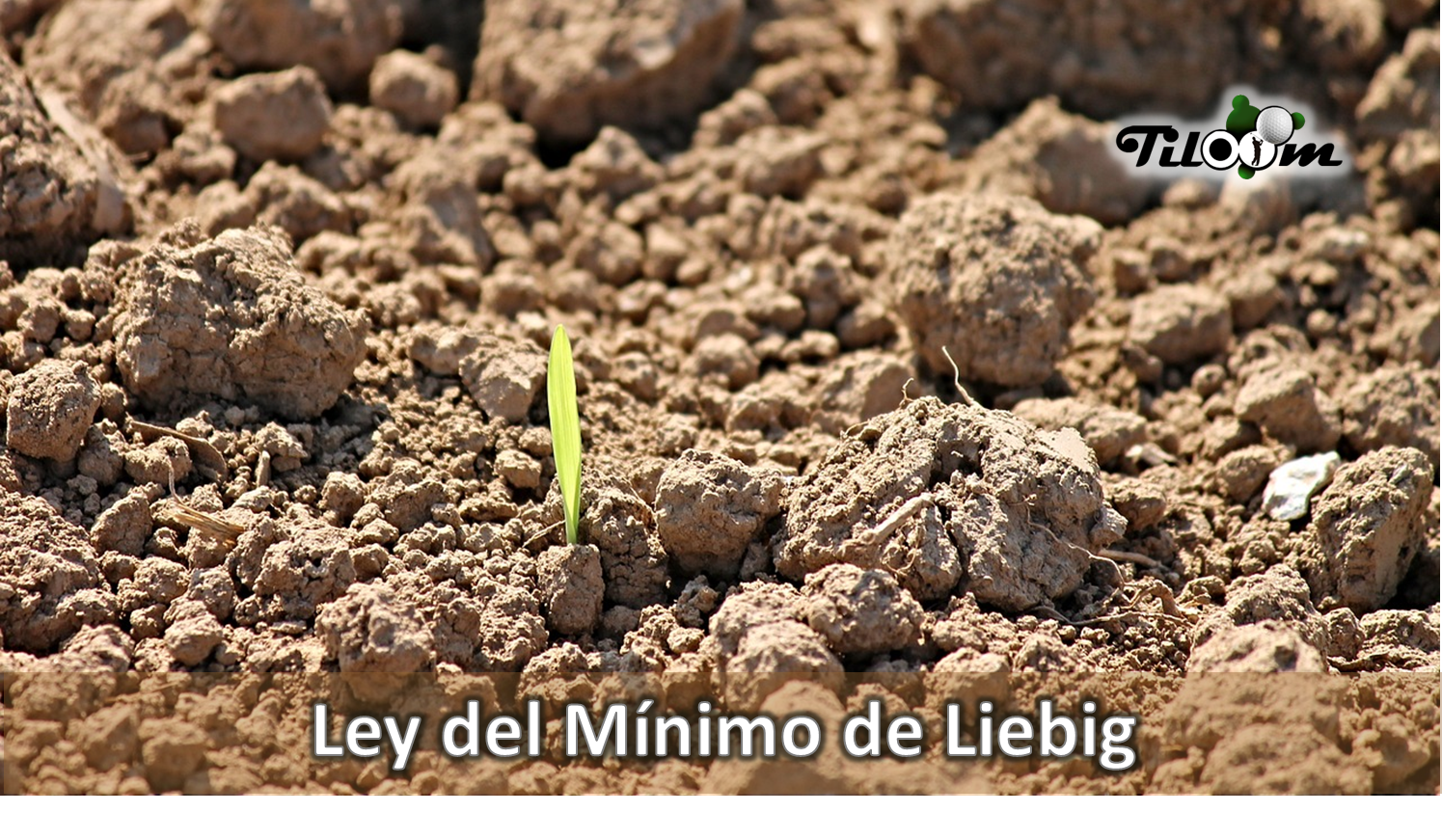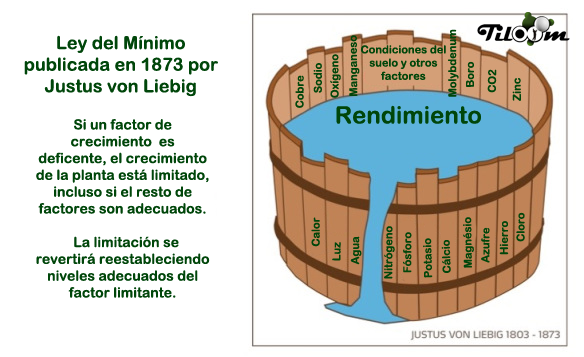🌟 Improve your sports field with a expert audit.

Share on RRSS

Liebig's law of minimum is a concept that had a great impact on the science of biology, agronomy and crop development. The nutrition Soil and plant science is a complex and very difficult area of agronomy to study. Soils are very different in every part of the world and the interactions have many important variables.
In 1873, the German chemist Justus von Liebig published his studies on plant nutrition, giving rise to the Law of the Minimum. This law states that the yield of a crop is determined by the nutrient that is found in the least amount in relation to the plant's demand, known as the "limiting factor".
Thus, the health of a crop is not controlled by the total amount of nutrients available in the soil. Rather, it is the proportion of each of them, and in particular the scarcest of the factors responsible for plant development.
Liebig is considered the "Father of the Fertilizer Industry" because of his focus on the importance of the nitrogen and other minerals essential for plant growth.
The Law of the Minimum can be visualised through Liebig's barrel analogy. Imagine a barrel composed of several staves, each representing a nutrient. The water level (crop yield) is limited by the shortest stave (the nutrient in the smallest quantity). This illustrates that the abundance of other nutrients cannot compensate for the deficiency of the limiting nutrient.

Each element in a plant has a specific function and that is why they are all important in their own way and can completely block the correct growth of a plant. This is because it can affect the growth, quality, reproduction and immune systems of plants. And it is not only mineral nutrition that is affected, it is not always easy to determine the cause of a particular problem because of all the conditioning factors that affect the growing environment.

Proper plant nutrition implies adequate availability of macronutrients, micronutrients and other essential factors. Here is a table showing the general functions of these nutrients:
In addition to nutrients, other factors influence plant growth:
A holistic approach that considers the availability of all nutrients and growth factors is crucial to maximise crop yields. Deficiency of any nutrient, however minor it may seem, can completely block proper plant growth, affecting plant quality, reproduction and immune systems.
The Liebig Minimum Law underlines the importance of balanced crop nutrition. Proper nutrient management not only improves crop yields, but also contributes to agricultural sustainability.
By ensuring the availability of macronutrients, micronutrients and other essential factors in the right doses, farmers can optimise the growth and production of their crops, thus ensuring more efficient and sustainable agriculture.
In order to deepen the knowledge of the Liebig Minimum Law and its impact on agriculture and plant nutrition, here are some highly recommended resources:
Through these resources, you can learn more about the principles of Liebig's Law of the Minimum and how to apply them effectively in your farming practices.

We appreciate your interest in us, so we leave you this form so that you can subscribe and have priority access to our exclusive promotions and offersideal for saving money on your purchases and keeping your sports and agricultural fields at the forefront!
In addition, we will keep you informed about the LATEST NEWS in Greens and Agriculture with the latest entries from our Greenkeepedia and Agrikipediaincluding innovations, events and interviews with experts.
Click to subscribe now and get exclusive access!
8 responses
Short, but it explains all the processes very well, but it would be missing those surface and internal factors that condition the plant.
Thank you, best regards
The law of the minimum is nowadays like the one who says "obsolete". It is a way to begin to understand plant nutrition but without going deeper into the interactions between nutrients such as those established in the mulder diagram I will soon publish more specific posts on the relationships between the factors that enable plant growth.
I hope you like them.
I liked the note, I would like to know if you have published articles about salinity and management of saline soils. Thank you
I'm glad you liked it.
Of course we have articles on salinity, more than 10!
I invite you to type "salinity" in our search engine so that all related articles will appear.
However, I will provide you with some of them.
https://www.tiloom.com/salinidad-de-suelos-y-la-toxicidad/
https://www.tiloom.com/salinidad-de-suelos-y-estres-hidrico/
https://www.tiloom.com/control-de-suelos-lavado-de-mantenimiento-vs-lavado-de-lixiviacion/
https://www.tiloom.com/indice-salino-de-fertilizantes/
https://www.tiloom.com/lavado-de-mantenimiento-vs-lavado-de-lixiviacion/
https://www.tiloom.com/conductividad-electrica/
https://www.tiloom.com/extracto-de-pasta-saturada/
I hope you find it useful!
excellent way to enrich the knowledge about agriculture in the university they teach you the use of elements for the profit of industrial enterprises.
Thank you very much! We need to be environmentally conscious.
There will be an approximate preparation, which contains all the elements in their minimum proportion as a general recipe, if I know that there are several factors to consider
very good although somewhat short, excellent for middle and high school students to start learning about soils and agriculture.